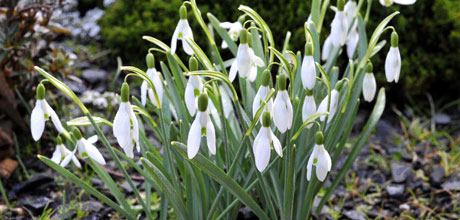Snowdrops a Favourite for Generations
This article was first published on 30 Aug 2011.

Galanthus
It seems apt, with our recent extreme weather, to talk about the snowdrop. Their charm means they have been sought after and cultivated for centuries. Early settlers imported them to decorate the land surrounding their homes, and they must have been freely available, as an article in the Otago Witness, August 1888, insists that “there is not a garden that should be without these delicate-looking flowers, either in town or country.” Flowering in late winter, a sign spring was on its way must have given the colonists relief that they’d made it through another New Zealand winter.
Galanthus nivalis is the common snowdrop. It has been so widely loved and moved about, that its place of origin is unverified. It grows throughout Europe and into Western Asia, usually in damp woodland.
Snowdrops benefit from being divided every few years as the leaves start to die back, but as long as you are gentle, this can be successful at any time.
When described by Linnaeus in 1753, he chose the name from the Greek words for milk: gala, flower: anthos, and nivalis: snow covered or snow like.
There are several plantings of Galanthus throughout the Dunedin Botanic Garden including the rock garden, alpine house, and rhododendron dell. There is a lovely clump on the edge of the rock garden as you walk up the hill from the lower garden. They have been planted on the shady side of a rock giving the bulbs protection from the heat of summer.
Robyn Abernethy is the Rock, Water & Alpine Collection Curator at the Dunedin Botanic Garden


